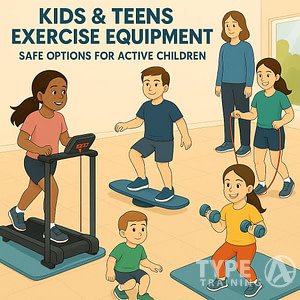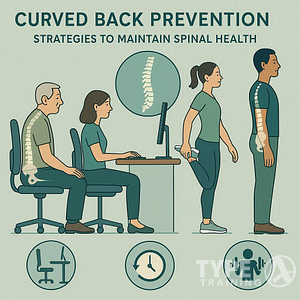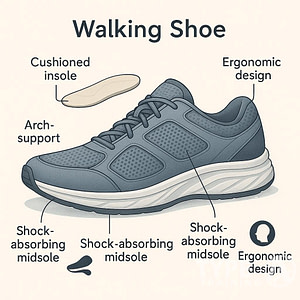As we age, it’s essential to maintain our physical health and fitness. Exercise is an excellent way to do that. Regular exercise can help seniors improve their balance, strength, and flexibility, which can reduce the risk of falls and injuries.
Finding the best exercises for seniors can be challenging, as seniors may have different physical abilities and health conditions. However, there are many exercises that seniors can do to improve their overall fitness. In this article, we’ll explore some of the best exercises for seniors that can help improve their balance, strength, and flexibility.
Importance of Exercise for Seniors
Regular exercise is crucial for maintaining good health and quality of life, especially as we age. Engaging in physical activity can improve balance, strength, flexibility, and overall health. In this section, we’ll discuss the benefits of exercise for seniors, CDC recommendations for seniors, and common health issues that seniors may face.
Benefits of Exercise for Seniors
Physical activity has numerous benefits for older adults. Regular exercise can help prevent chronic conditions such as heart disease, diabetes, and osteoporosis. It can also improve mental health, cognitive function, and sleep quality. Exercise can also help seniors maintain their independence and reduce their risk of falls and disabilities.
Popular posts:
CDC Recommendations for Seniors
The Centers for Disease Control and Prevention (CDC) recommends that older adults engage in at least 150 minutes of moderate-intensity aerobic activity per week, as well as muscle-strengthening activities on at least two days per week. Seniors should also incorporate balance exercises into their routine to reduce their risk of falls.
Common Health Issues for Seniors
Seniors may face a variety of health issues that can make exercise more challenging. For example, arthritis can cause joint pain and stiffness, making it difficult to engage in certain activities. Chronic obstructive pulmonary disease (COPD) can make it harder to breathe during exercise. Seniors with these or other health conditions should consult with their healthcare provider before starting an exercise program.
In conclusion, regular exercise is essential for seniors to maintain good health and quality of life. By following CDC recommendations and incorporating balance exercises into their routine, seniors can improve their strength, flexibility, and overall health. While some health issues may make exercise more challenging, seniors should work with their healthcare provider to find safe and effective ways to stay active.
[bctt tweet=”By following CDC recommendations and incorporating balance exercises into their routine, seniors can improve their strength, flexibility, and overall health. #seniors #seniorfitness #seniorhealth” username=”typeatraining”]
Types of Exercises for Seniors
As we age, it’s important to maintain our physical health through regular exercise. Seniors can benefit greatly from a well-rounded exercise routine that includes aerobic exercises, strength training exercises, balance exercises, and flexibility exercises. Let’s take a closer look at each of these types of exercises.
Aerobic Exercises
Aerobic exercises, also known as cardio, are great for improving heart health and endurance. These exercises increase your heart rate and breathing, and can include activities like walking, cycling, swimming, and dancing. Seniors should aim for at least 150 minutes of moderate intensity aerobic exercise per week, or 75 minutes of vigorous intensity aerobic exercise per week.
Strength Training Exercises
Strength training exercises are important for building and maintaining muscle mass, which can help with balance and prevent injuries. Seniors can use dumbbells, resistance bands, or even their own body weight to perform exercises like arm curls, wall pushups, and back leg raises. It’s important to work all major muscle groups, including the shoulders, back, and hips.
Balance Exercises
Balance exercises are crucial for seniors, as they help improve stability and coordination, and reduce the risk of falls. Examples of balance exercises include the heel-to-toe walk, the tightrope walk, the flamingo stand, and the tree pose in yoga. Seniors can also try exercises that involve stabilizing on one leg or using a partner for added support.
Flexibility Exercises
Flexibility exercises can help improve range of motion and prevent stiffness. Seniors can perform stretching exercises like the back stretch, the hamstring stretch, and the quad stretch. Yoga is also a great option for improving flexibility, as it involves a variety of poses that stretch and strengthen the body.
Incorporating a variety of exercises into your routine can help improve balance, strength, and flexibility, and keep you feeling healthy and active as you age. Remember to start slow and gradually increase the intensity and duration of your workouts. Consult with your doctor before beginning any new exercise program, especially if you have any health concerns.
Aerobic Exercises for Seniors
Aerobic exercises are essential for seniors to maintain good heart health. These exercises increase your heart rate, which helps improve your cardiovascular system. Some of the best aerobic exercises for seniors include:
Swimming
Swimming is a low-impact exercise that is gentle on your joints. It is an excellent way to improve your cardiovascular system and build endurance. Swimming also helps you maintain your flexibility and balance.
Biking
Biking is another low-impact exercise that is easy on your joints. It is an excellent way to improve your cardiovascular system and build endurance. Biking also helps you maintain your balance and coordination.
Climbing Stairs
Climbing stairs is a simple and effective way to improve your cardiovascular system. It is also an excellent way to build strength in your legs and improve your balance.
Dancing
Dancing is a fun way to improve your cardiovascular system and build endurance. It is also an excellent way to maintain your balance and coordination. Dancing can be done alone or with a partner, making it a social activity.
Cardio Exercises
Cardio exercises like walking, jogging, and running are great for improving your cardiovascular system. They are also an excellent way to build endurance and maintain your balance and coordination.
Incorporating aerobic exercises into your daily routine is an excellent way to maintain good heart health. These exercises are easy to do and can be done alone or with others. Choose an exercise that you enjoy and make it a regular part of your routine.
Strength Training Exercises for Seniors
Strength training is an essential part of any exercise routine for seniors. It helps build muscle strength and mass, improve bone density, and enhance balance and coordination. Here are some effective strength training exercises seniors can try.
Benefits of Strength Training for Seniors
Strength training has several benefits for seniors. It helps prevent muscle loss, which is a common problem as we age. It also improves muscle strength, which can help seniors perform everyday tasks with ease. Additionally, strength training can help seniors maintain their independence and improve their quality of life.
Resistance Training with Weights
Resistance training with weights is an effective way to build muscle strength and mass. Seniors can use dumbbells or other weights to perform exercises such as arm curls and back leg raises. It is essential to start with light weights and gradually increase the weight as strength improves. Seniors should also work with a partner or trainer to ensure proper form and avoid injury.
Resistance Training with Bands
Resistance bands are an excellent alternative to weights for seniors who prefer a low-impact workout. They are easy to use and come in different resistance levels. Seniors can use resistance bands to perform exercises such as wall pushups and core exercises. Resistance bands are also lightweight and portable, making them ideal for seniors who travel frequently.
Bodyweight Exercises
Bodyweight exercises are an excellent way to build strength and improve balance and coordination. Seniors can perform exercises such as squats, lunges, and pushups without any equipment. These exercises can be modified to suit seniors of different fitness levels. For example, wall pushups are an excellent alternative to traditional pushups for seniors who find them challenging.
In conclusion, strength training is an essential part of any exercise routine for seniors. Seniors can use weights, resistance bands, or bodyweight exercises to build muscle strength and mass, improve bone density, and enhance balance and coordination. It is essential to start with light weights or resistance and gradually increase the intensity as strength improves. Seniors should also work with a partner or trainer to ensure proper form and avoid injury.
Balance Exercises for Seniors
Balance exercises are an essential component of senior fitness programs. They help improve balance, stability, and coordination, which can prevent falls and maintain independence. Here are some of the best balance exercises for seniors.
Benefits of Balance Exercises for Seniors
Balance exercises offer many benefits for seniors, including:
- Improved balance and stability
- Better coordination
- Stronger hip muscles
- Increased flexibility
- Prevention of falls and injuries
One-Foot Balance Exercises
One-foot balance exercises are an excellent way to improve balance and stability. Here are some examples:
- Tree Pose: Stand on one foot and place the other foot on the inside of your thigh. Hold for 30 seconds and switch sides.
- Heel-to-Toe Walk: Walk heel-to-toe in a straight line, placing the heel of one foot in front of the toes of the other foot.
- Tightrope Walk: Walk a straight line with one foot in front of the other, as if walking on a tightrope.
- Flamingo Stand: Stand on one foot and lift the other leg behind you. Hold for 30 seconds and switch sides.
Tai Chi
Tai Chi is a low-impact exercise that helps improve balance, stability, and flexibility. It involves slow, controlled movements that are easy on the joints. Tai Chi classes for seniors are widely available and can be a great way to stay active and improve balance.
Yoga
Yoga is another low-impact exercise that can help improve balance and flexibility. It involves a series of poses that focus on strength, balance, and flexibility. Some of the best yoga poses for seniors include the tree pose, the warrior pose, and the downward-facing dog.
Stabilizing Exercises
Stabilizing exercises can help improve balance and stability by strengthening the muscles that support the spine and back. Here are some examples:
- Back Extension: Lie on your stomach and lift your chest off the ground. Hold for a few seconds and release.
- Side Plank: Lie on your side and lift your body off the ground, supporting yourself with your forearm. Hold for 30 seconds and switch sides.
- Bird Dog: Get on your hands and knees and lift one arm and the opposite leg. Hold for a few seconds and switch sides.
Incorporating balance exercises into your fitness routine can help improve your balance, stability, and coordination. By doing these exercises regularly, you can reduce your risk of falls and maintain your independence.
Flexibility Exercises for Seniors
As we age, our muscles and joints tend to become stiff, reducing our range of motion and making it harder to perform everyday activities. However, regular flexibility exercises can help seniors improve their range of motion, reduce stiffness, and maintain their independence. Here are some of the benefits of flexibility exercises for seniors, along with some examples of stretching exercises and partner stretches.
Benefits of Flexibility Exercises for Seniors
Flexibility exercises can help seniors in many ways, including:
- Reducing the risk of injury: Improved flexibility can help seniors avoid falls and other injuries by making it easier to move around and maintain balance.
- Enhancing physical performance: Better flexibility can help seniors perform everyday activities like bending, reaching, and lifting with greater ease and comfort.
- Reducing pain and stiffness: Stretching exercises can help alleviate pain and stiffness in the muscles and joints, making it easier to move around and stay active.
- Improving mental health: Flexibility exercises can help reduce stress and anxiety, improve mood, and boost overall mental health.
Stretching Exercises
Stretching exercises are an excellent way for seniors to improve their flexibility. Here are some examples of stretching exercises that seniors can do at home:
- Shoulder stretch: Stand with your feet shoulder-width apart and your arms at your sides. Raise your left arm straight up and bend your elbow so that your hand touches your upper back. Use your right hand to gently push your left elbow back and hold for 10-15 seconds. Repeat on the other side.
- Hamstring stretch: Sit on the floor with your legs straight out in front of you. Reach forward with your hands and try to touch your toes. Hold for 10-15 seconds.
- Quadriceps stretch: Stand with your feet shoulder-width apart and hold onto a chair or wall for support. Bend your left knee and bring your heel towards your buttocks. Use your left hand to hold onto your ankle and gently pull your heel towards your buttocks. Hold for 10-15 seconds and repeat on the other side.
Partner Stretches
Partner stretches can be a fun and effective way for seniors to improve their flexibility. Here are some examples of partner stretches that seniors can do with a friend or family member:
- Seated forward bend: Sit on the floor facing your partner with your legs straight out in front of you. Reach forward and hold onto your partner’s hands. Use your partner’s hands to gently pull yourself forward into a stretch. Hold for 10-15 seconds.
- Seated twist: Sit on the floor with your legs straight out in front of you. Bend your right knee and place your foot on the outside of your left knee. Twist your torso to the right and hold onto your partner’s right knee with your left hand. Use your partner’s knee to gently pull yourself into a stretch. Hold for 10-15 seconds and repeat on the other side.
In conclusion, flexibility exercises are an important part of any senior’s fitness routine. By incorporating stretching exercises and partner stretches into their daily routine, seniors can improve their range of motion, reduce stiffness, and maintain their independence.
Preventing Injuries and Falls for Seniors
Falls and injuries are common among seniors, and they can lead to serious health complications. However, you can take steps to prevent falls and injuries by incorporating balance, strength, and flexibility exercises into your daily routine.
Importance of Fall Prevention
Falls are a leading cause of injury among seniors, and they can result in fractures, head injuries, and other serious health complications. However, many falls can be prevented by practicing balance and stability exercises, improving strength, and taking steps to prevent injuries in your daily life.
Exercises to Improve Balance and Stability
Balance and stability exercises can help seniors stabilize themselves and prevent falls. Some examples of balance exercises include standing on one foot, walking heel-to-toe, and practicing yoga or tai chi. These exercises can help improve your balance and coordination, and they can be done at home or in a group setting.
Exercises to Improve Strength
Strength exercises can help seniors improve their overall strength and prevent falls. Some examples of strength exercises include lifting weights, using resistance bands, and doing bodyweight exercises like squats and lunges. These exercises can help improve your balance and stability, as well as your overall strength and flexibility.
Preventing Injuries in Daily Life
In addition to practicing balance and strength exercises, there are steps you can take to prevent injuries in your daily life. For example, you can make sure your home is free of clutter and well-lit, wear appropriate footwear, and use assistive devices like canes or walkers if needed. You can also take steps to prevent falls by avoiding slippery surfaces, using handrails when going up and down stairs, and being mindful of your surroundings.
By incorporating balance, strength, and flexibility exercises into your daily routine and taking steps to prevent injuries in your daily life, you can reduce your risk of falls and injuries as a senior.
Conclusion
In conclusion, regular exercise is an essential part of maintaining good health and wellbeing, regardless of age. For seniors, exercise can improve balance, strength, and flexibility, which can help prevent falls and injuries. By incorporating a variety of exercises into your routine, you can keep your body strong and healthy.
When starting an exercise program, it’s important to consult with your healthcare provider to ensure that you are healthy enough to exercise and that the exercises you choose are appropriate for your fitness level and any medical conditions you may have.
Some of the best exercises for seniors include aerobic exercises like brisk walking, jogging, biking, swimming, or aerobic classes, which can improve cardiovascular health and endurance. Strength training exercises like weight lifting or resistance bands can improve muscle strength and prevent muscle loss. Balance exercises like standing on one foot or heel-to-toe walking can improve balance and prevent falls. Finally, stretching exercises like yoga or Pilates can improve flexibility and range of motion.
By incorporating a combination of these exercises into your routine, you can improve your overall health and wellbeing, and maintain your independence and mobility as you age. Remember to start slowly and gradually increase the intensity and duration of your workouts, and always listen to your body and rest when needed.
Frequently Asked Questions
What are some stretching exercises for seniors?
Stretching exercises are important for seniors to maintain flexibility and mobility. Some recommended stretching exercises for seniors include neck stretches, shoulder rolls, arm circles, hamstring stretches, calf stretches, and ankle rotations. These exercises can be done while sitting or standing and can help improve range of motion and reduce the risk of injury.
How can seniors improve their coordination?
Coordination exercises can help seniors improve their balance and reduce the risk of falls. Some recommended coordination exercises for seniors include marching in place, heel-to-toe walking, and standing on one foot. These exercises can be done at home or in a group setting and can help improve overall coordination and balance.
What are some dynamic balance exercises for elderly?
Dynamic balance exercises involve movement and can help seniors improve their balance and coordination. Some recommended dynamic balance exercises for seniors include side steps, leg swings, and lunges. These exercises can be done at home or in a group setting and can help improve overall balance and stability.
What are some easy balance exercises for seniors to do at home?
There are many easy balance exercises that seniors can do at home to improve their balance and reduce the risk of falls. Some recommended exercises include heel raises, toe taps, and standing on one foot. These exercises can be done while holding onto a chair or countertop for support and can be done daily to help improve balance and stability.
What are some recommended balance exercises for seniors?
Some recommended balance exercises for seniors include the single limb stance, walking heel to toe, and clock reach. These exercises can help improve balance and reduce the risk of falls. They can be done at home or in a group setting and can be modified to fit individual needs and abilities.
What are some simple exercises to improve balance for seniors?
Simple exercises like standing on one foot, heel raises, and toe taps can help improve balance for seniors. These exercises can be done at home or in a group setting and can be modified to fit individual needs and abilities. Incorporating balance exercises into daily routines can help improve overall balance and reduce the risk of falls.








